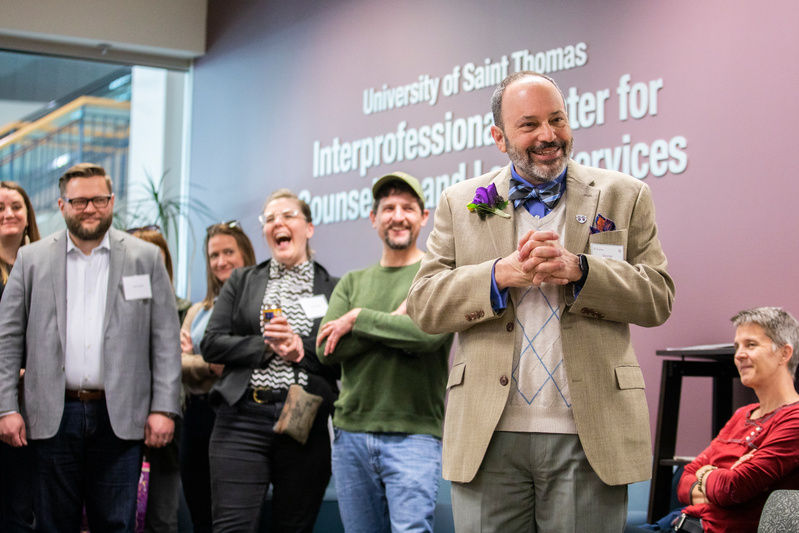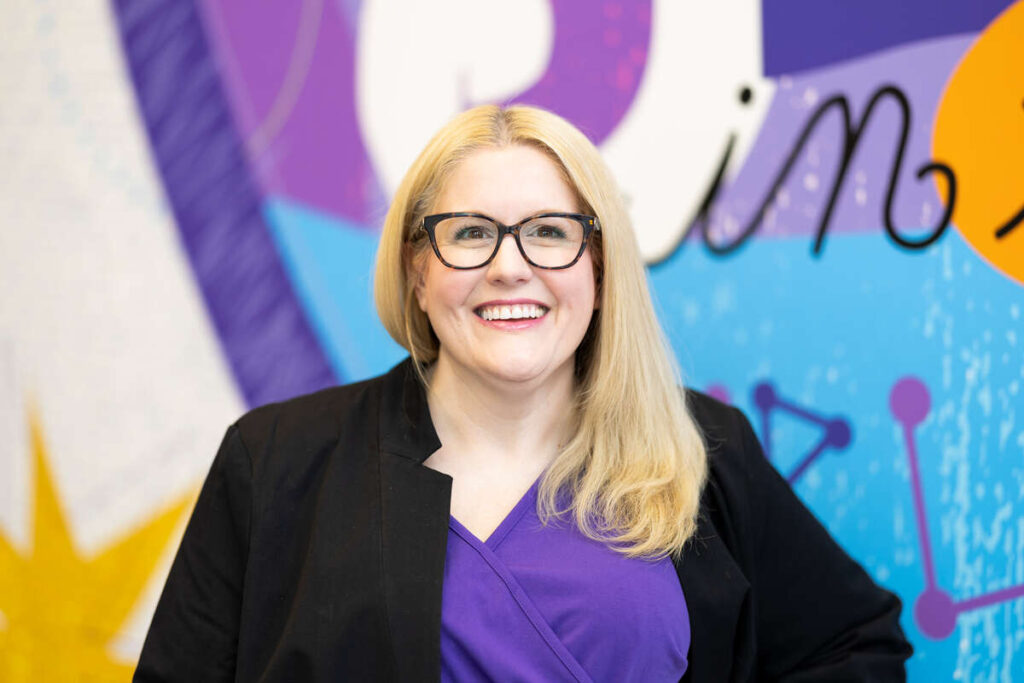Nurses and social workers collaborate daily when caring for patients, but the students training for these professions almost never cross paths. The Morrison Family College of Health at the University of St. Thomas is changing that thanks to a plan of integrated learning and teaching across health disciplines.
Together, students from the Susan S. Morrison School of Nursing and the School of Social Work file into a classroom in McNeely Hall. At the front of the class stands Dr. Raney Linck, an assistant professor in the School of Nursing, and George Baboila, a clinical faculty member in the School of Social Work. They will spend the next few hours leading these students in a lively discussion about culturally responsive care and the importance of professional collaboration to achieve better health outcomes for patients.
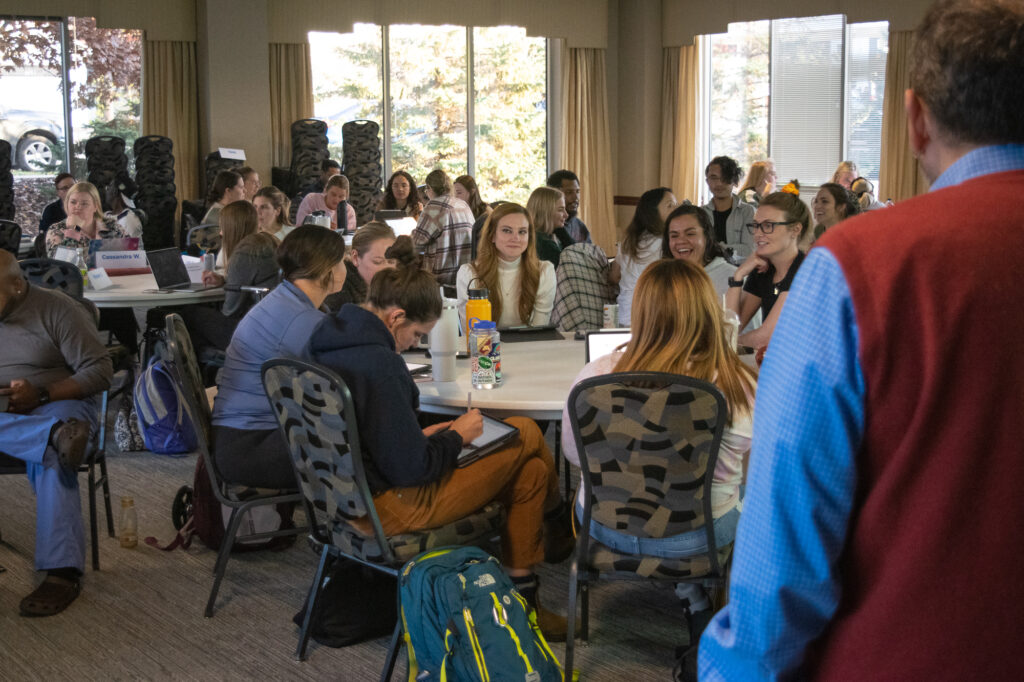
“A patient has so many different factors that can affect their care,” Linck said. “For example, maybe they have a hard time asking for help or need extra psychological support to deal with physical trauma and unpack what happened.”
How a disconnect between providers can lead to undiagnosed or untreated conditions is a takeaway the professors want the students to understand, especially considering these issues are exacerbated among members of underserved populations who may miss or forego care due to any number of compounding factors tied to race, location and income.
“Having social work and nursing classes come together teaches the students to understand the patient as a whole person,” Linck said.
In a hospital or clinic setting, social workers and nurses work together often on an interdisciplinary health care team. In this class, the collaboration between the social work and nursing students gives them a jump on how to better understand each other’s roles, skills and expectations.
In this course, “students are exposed to how medical providers, nurses, social workers and other health professionals are working together on the overall health of a person, so that we're all kind of working as a team with the patient at the center,” Baboila said. The students learn that “it’s more than just being co-located, it is about being integrated so the nurse and the social worker and the provider are all working on the floor with the patient.”
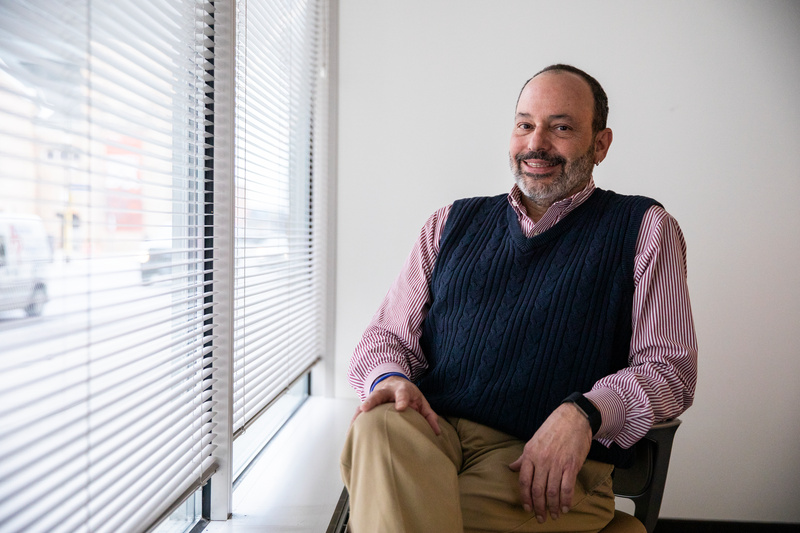
Several of the students say they see the value of each other’s roles when they participate in this course, and they even express excitement about this opportunity to learn alongside their future collaborators.
“It’s really cool that we can have social work and nursing classes come together to dive in and learn more about some intersections of health,” said Olivia de Grace, an MSN student who is learning about situations that may call for a social worker to provide whole-person care.
For instance, while de Grace treats a patient’s immediate effects of hunger and malnutrition, a social worker may provide the patient with resources for more reliable access to food.
“We can talk about interprofessional collaborations with bullet points and PowerPoint presentations, or we can get in a room together and do it,” said Linck, who teaches a whole-person well-being graduate nursing course. When he came across the syllabus for Baboila’s graduate clinical social work course in behavioral health, he immediately saw possibilities for collaboration.
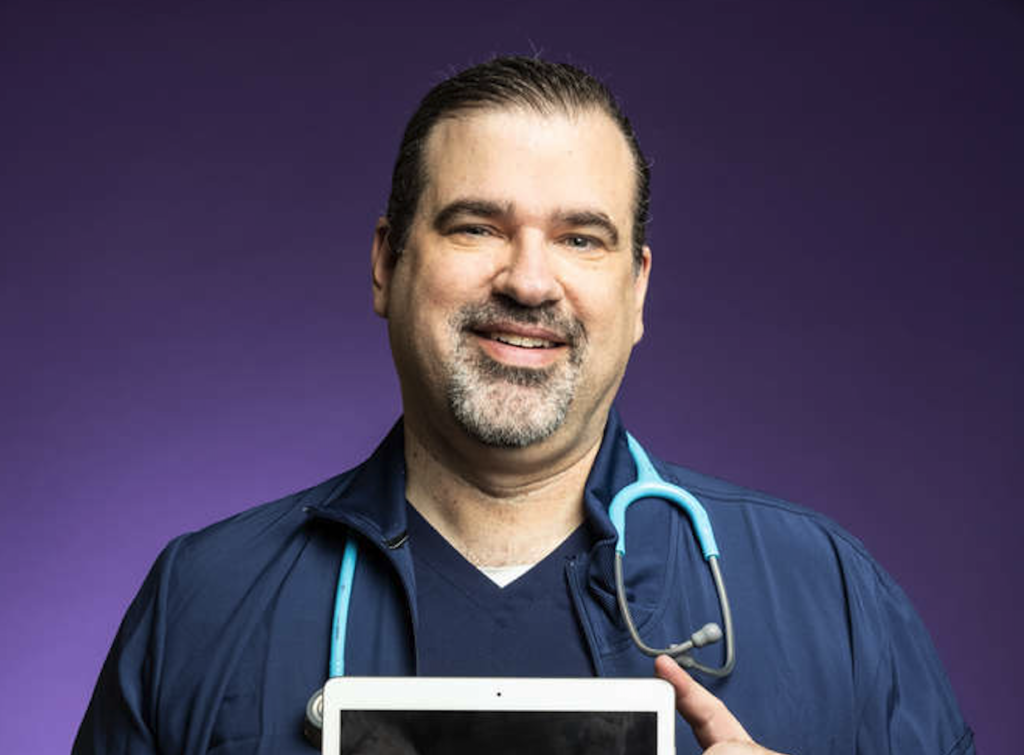
“We might have a different lens that we look through, but we’re still trying to accomplish the same kinds of goals with our patients,” Baboila said.
In one session, nursing and social work students were tasked with the intake of a patient. Separately, the two groups went through details such as: What questions should be asked? How should a thorough holistic assessment of this person be conducted? What are the most important factors to guide care? The groups then came together to discuss their approaches and analyze the similarities and differences.
“We were assigned to write a bio-psycho-sociocultural-assessment for a case study using our assessment skills and whole-person concept,” Deqa Yusuf, an MSW student, said. “I noticed that the nurses were focused on the biological causes of dysfunction and the social workers were focused on the psychological aspects. I also noticed that both fields can better serve patients by providing a well-rounded perspective centered on the patient.”
Yusuf said the class is extremely beneficial for social workers and nursing students because it provides an opportunity to interact, get to know each other, and build relationships. “As social workers, we are learning and collaborating with nurses to better understand each other’s roles, skills, and expectations,” Yusuf added. “I did not realize (before this class) how similar social workers and nurses are in their practice of meeting patients’ needs.”
This is one of the many goals of the program that translates to real-life practice.
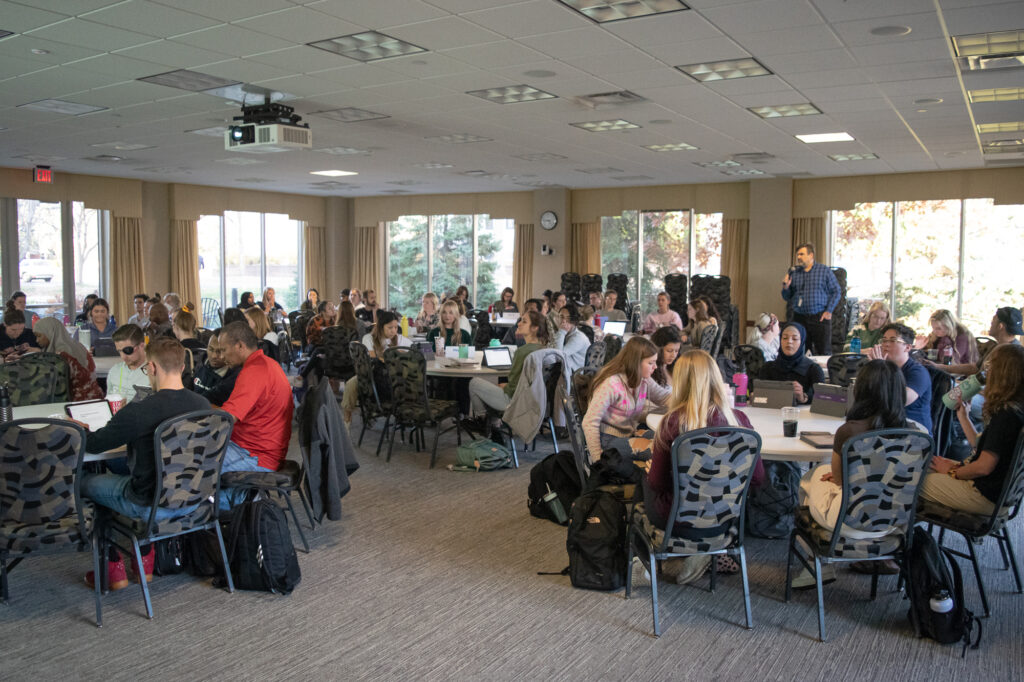
“We are always looking for ways to improve interprofessional collaboration in terms of education, and also in terms of future practice,” Linck said. “That begins in education. We’re getting them to talk to each other. As we move to a more decentralized health care system, we also need to make sure that our patients and their families don’t fall through the cracks.”
